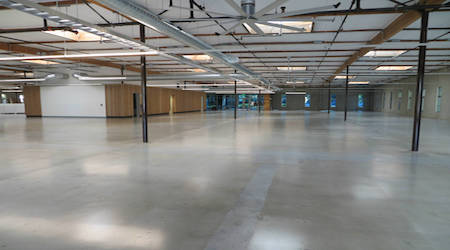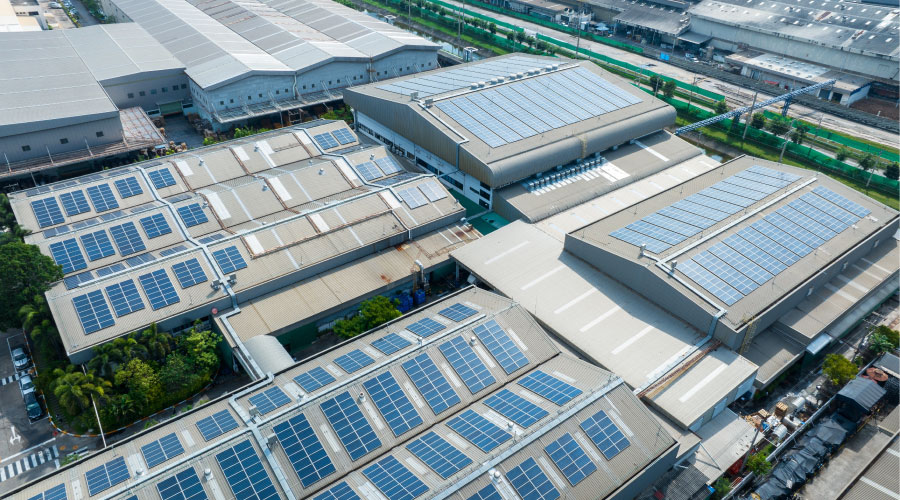Innovative FMs Look To Save 40-50 Percent on Energy With Deep Energy Retrofits
First part of a 3-part article exploring how deep energy retrofits can dramatically cut energy use.
A small but growing number of buildings have adopted an innovative, highly impactful approach to energy efficiency. Known as deep energy retrofits, these projects aim for big energy savings — sometimes 40 to 50 percent. The way they work is a striking departure from the piecemeal or single-system focus of conventional energy improvement projects. “You put everything on the table,” says Kevin Kampschroer, an energy executive at the U.S. General Services Administration who has been involved in about 45 of these retrofits. Going deep means everything comes under scrutiny — the building envelope, the lighting system, the HVAC system, and so on.
“You see what is possible, what will make the difference, and then you start winnowing down from the ‘everything list,’ ” Kampschroer says. “We typically start with a total engineering review of the building that is both an energy audit and a maintenance audit. We’re looking at the condition as well as the performance of the building.”
At GSA, which has 370 million square feet of office space and about 10,000 buildings, a deep energy retrofit aims for a 50 percent reduction in energy and water consumption “but we’re generally happy with 40 percent,” says Kampschroer, director of GSA’s Office of Federal High-Performance Green Buildings and chief sustainability officer.
Another part of the standard definition of the deep energy retrofit is how long it takes — it’s typically a multi-year time frame, says Michael Bendewald, a manager on the buildings team at the Rocky Mountain Institute. A common reason for that is a facility’s desire to time big improvements with tenant rollover or to avoid large capital expenditures in a single year. A deep retrofit analysis will likely conclude that a facility could benefit from many efficiency measures. In that case, Bendewald says, “you can strategically time these measures for optimal benefit. You first may want to address the opportunities to reduce heating and cooling loads — lighting, envelope — and then maybe within five years’ time, closer to the lifetime of the chiller, is when you deploy the new HVAC equipment and controls, which can now be downsized to more closely match the newly reduced loads. A deep energy retrofit allows you to strategize the when as well as the what.”
Understanding Deep Energy Retrofits
Among the common improvements in deep energy retrofits are switching lights to LEDs and, in the building envelope, replacing windows or adding a reflective heat barrier (as was done when the Empire State Building added insulated reflective barriers behind radiator units located on the perimeter of the building). With the HVAC system, it might be a switch from pneumatic controls to direct digital controls, or keeping the same HVAC system but updating parts of it, or switching the HVAC design altogether. Interior improvements are common as well, including rearranging an office environment to let more daylight in, perhaps by moving perimeter offices with doors and opaque walls closer to the center of the floorplate. Another option is making the opaque walls of perimeter offices translucent to allow more daylight into the interior common areas, which also helps reduce the lighting load. Daylight controls would be added, too, to capture the savings. GSA has been doing a lot of work switching systems to ground source heat pumps — a big shift in how heating and cooling gets done, and much more energy efficient, Kampschroer says.
But while specific energy efficiency measures may be common, there is no template of upgrades that applies to all deep energy retrofits. The key to deep energy retrofits is to take a holistic, integrated approach in planning. Different building systems, such as HVAC and lighting, interact. A whole-building approach aims to optimize those interactions to capture cross-savings and get past “a widget-based energy-efficiency approach,” says Alexi Miller, project manager, New Buildings Institute.
To do that, it’s essential to think carefully about the sequence of executing multiple improvements. “I would think of it from the outside in — deal with everything that is affecting the load in the building first, and then change the (heating and cooling) plant,” Kampschroer says. “If you’re going to do the windows and lights, you’re probably going to want to do them first, so you can put in a much smaller chiller.”
Kampschroer says that in most buildings it is possible to “make drastic improvement in control systems, in lighting, and in HVAC systems. The question mark is the building envelope.” The envelope is important because, if chillers and the heating plant are going to be replaced, improved insulation can reduce costs significantly by reducing the heating and cooling loads.
“If you only look at what the mechanical systems are doing, you can easily end up developing mechanical systems” that are larger than they would be if loads were cut first, Kampschroer cautions.
Best Candidates for Deep Retrofits
Miller says he sees good examples of deep energy retrofits across a variety of building types and sizes. Most of the projects Bendewald sees right now at RMI are in the institutional sector (municipalities, hospitals, education), which has the capacity for a longer-term payback, and typically in multi-story buildings larger than 100,000 square feet.
“There’s got to be some kind of trigger,” he says, “and it’s usually related to the need for capital improvement.” Occupant complaints could be one trigger. On the other hand, Bendewald says, “some facilities just get allocated the dollars and qualify for some capital improvement budget.”
The cost of a deep energy retrofit varies a lot, depending on what you’re starting with, Bendewald says. The cost can range from a few dollars a square foot, in poorly operated buildings where operational improvements can be captured pretty cheaply, to $100 a square foot or more for complete renovations that often include some aesthetics.
“We see a lot of cases — most cases — where the renovations are done within standard budget ranges for this type of work,” Miller says. “One of the key pieces is setting an energy target early and then having the ability to incorporate that thinking early. For example, one way to reduce project cost can have to do with reduction in equipment sizes. Equipment is wildly oversized. If you have a boiler you need to put in, you can replace it one to one and probably have one that’s larger than it needs to be. Or, take $100,000 and devote that to improving the building envelope and leakage rates and other actions that reduce need for heating, and you may be able to downsize the boiler size drastically.”
The typical deep energy retrofit these days is using a 10- to 15-year payback period in terms of energy cost savings, Bendewald says. At GSA, a “long-term-hold organization” that hangs onto its real estate, “we’re looking for a positive return on investment over a 25-year period, including the construction time,” Kampschroer says.
A key issue, Miller says, is that the person at a company who gets the energy bills is often divorced from capital costs. So the facility manager has to make the case that financial decision-makers need to link utility-bill payments with capital improvements. If the utility bill goes down as a result of an energy-efficiency project, then the facility managers need to have some of that decrease be allocated to capital costs. The facility manager “needs to find a way to connect energy spending and capital on energy-related projects,” Miller says. “Once that connection is solidly made, they can often get a green champion within the executive or financial ranks.”
What you get from all these improvements, the retrofit experts say, is not simply a substantial savings on the energy bill, but rather a mixture of hard and soft benefits. Indeed, the non-energy benefits can actually dwarf the energy benefits, according to Miller.
“Fundamentally,” says Bendewald, “you have the opportunity to really improve the occupant experience,” with such benefits as cleaner air and better use of daylight. That in turn creates more satisfied and productive employees, which helps an employer reduce turnover. Facility managers benefit too, he says: If they gain better control of their building and run a space that provides better environmental quality, then they get more satisfied employees and fewer occupant complaints about things like thermal comfort and sunlight on computer screens. Creating a desirable place to work makes a difference in recruiting and employee retention, in Kampschroer’s view.
One way to ensure an improved occupant experience is paying attention during retrofits to providing things like good indoor air quality, daylighting, views to the outside, and interior control over things like windows, lighting, and glare.
On the money side, thanks to improved space and energy efficiency, the upgraded buildings will potentially provide an increase in net operating income and asset value. An improved space in general means tenants will be potentially willing to pay more for a lease and there will be less down time on rent.
Top photo caption, credit: In Sunnyvale, Calif., Sharp Development Co. did a major renovation and deep energy retrofit on this once dark and dingy 1970s office building of 30,000 square feet. Pictured above is the post-renovation interior before an open office space design and furnishings were added. PHOTO COURTESY OF SHARP DEVELOPMENT CO.
Related Topics:














